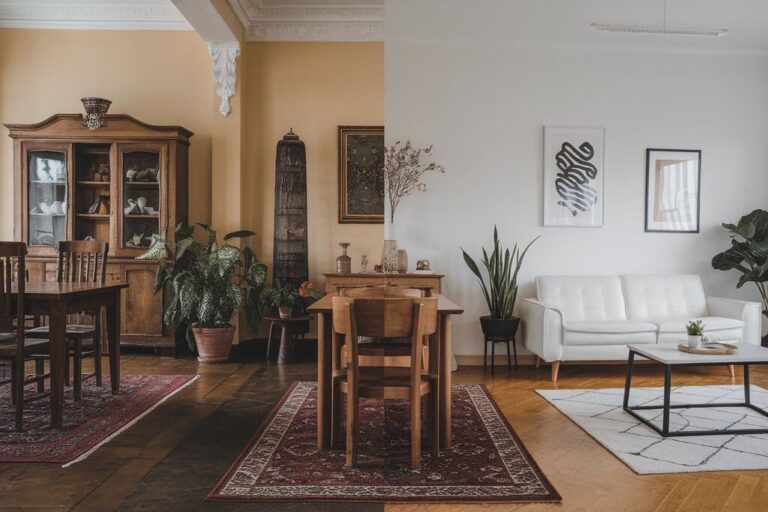In this blog, I will share the key differences between traditional and modern interior design. Each style offers a unique look and feel. Understanding them will help you choose the best fit for your home.
Traditional design is warm and elegant. It features rich textures, deep colors, and detailed furniture. Modern interiors are sleek and simple. They use clean lines, neutral tones, and open spaces.
Both styles have their appeal. Which one matches your lifestyle? Let’s explore the details.
What is Traditional Interior Design?
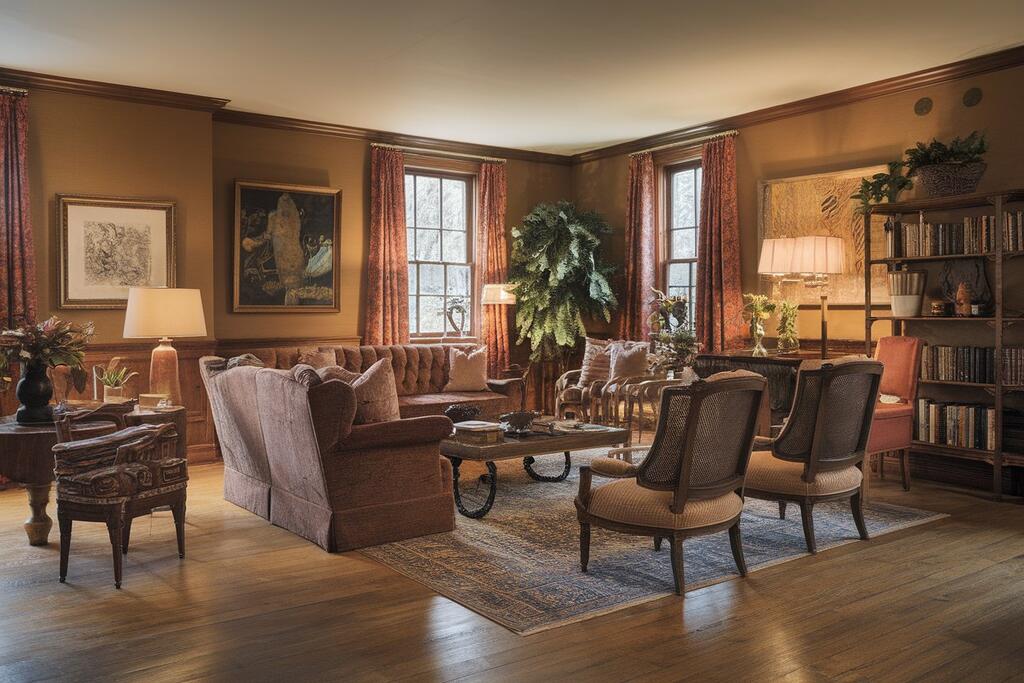
Traditional interior design is timeless and elegant. It draws inspiration from 18th- 19th-century European architecture and classical influences. Every element is carefully crafted to create a warm and inviting space.
This style features rich color palettes like deep reds, greens, and browns. Materials include intricate woodwork, plush textiles, and ornate detailing. Furniture is sturdy and well-crafted, often with carved designs and curved edges.
Symmetry plays a key role. Rooms are arranged in a balanced way, creating a sense of harmony. Chandeliers, decorative moldings, and classic artwork enhance the overall look. If you love history, sophistication, and timeless charm, traditional design might be the right choice for you.
What is Modern Interior Design?
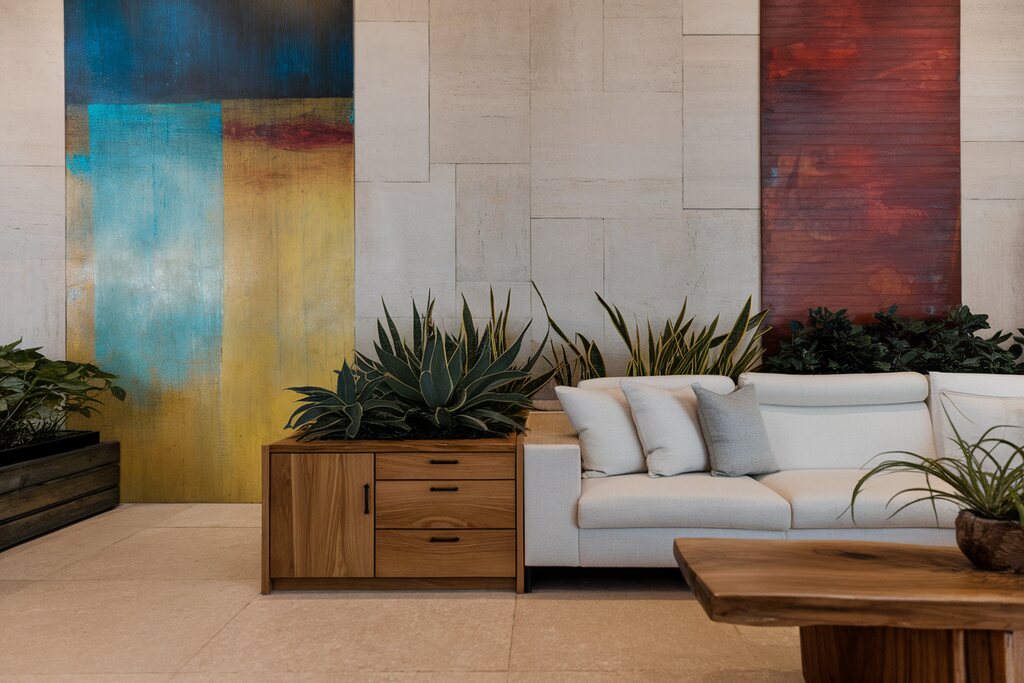
Modern interior design focuses on simplicity and functionality. It emerged in the 20th century as a response to ornate and heavy designs. The goal is to create a clean, open, and practical space.
This style embraces neutral colors like white, gray, and black. Furniture is sleek and minimal, often with straight lines and geometric shapes. Materials like glass, steel, and polished concrete replace heavy wood and detailed carvings.
Natural light is a key feature. Large windows, open floor plans, and uncluttered spaces make rooms feel bright and airy. If you prefer a clean, organized home with a modern touch, this style is perfect for you.
Key Differences Between Traditional and Modern Interiors
Furniture & Decor
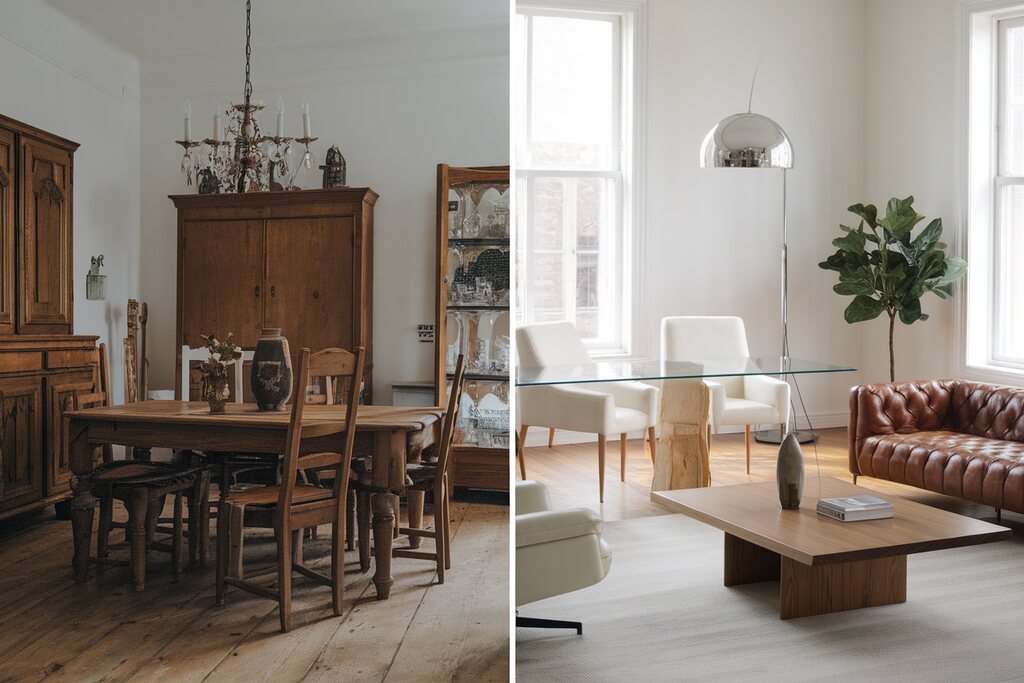
Traditional furniture is bold and detailed. It features dark wood like mahogany or cherry, often with intricate carvings. Sofas and chairs have plush upholstery in materials like velvet and silk, adding texture and warmth.
The decor is rich and layered. Antique pieces, ornate chandeliers, and framed artwork are common. Spaces feel elegant and classic, creating a timeless atmosphere. If you love a sense of history and craftsmanship, this style is for you.
Modern furniture is sleek, simple, and functional. It focuses on clean lines and geometric shapes. Pieces are often made from metal, glass, or engineered wood, avoiding heavy ornamentation.
Decor is kept minimal. Instead of multiple accessories, modern spaces rely on statement pieces, like a bold painting or a unique sculpture. Less clutter creates an open, airy feel. If you prefer a streamlined and organized look, modern decor is the way to go.
Color Palettes & Materials
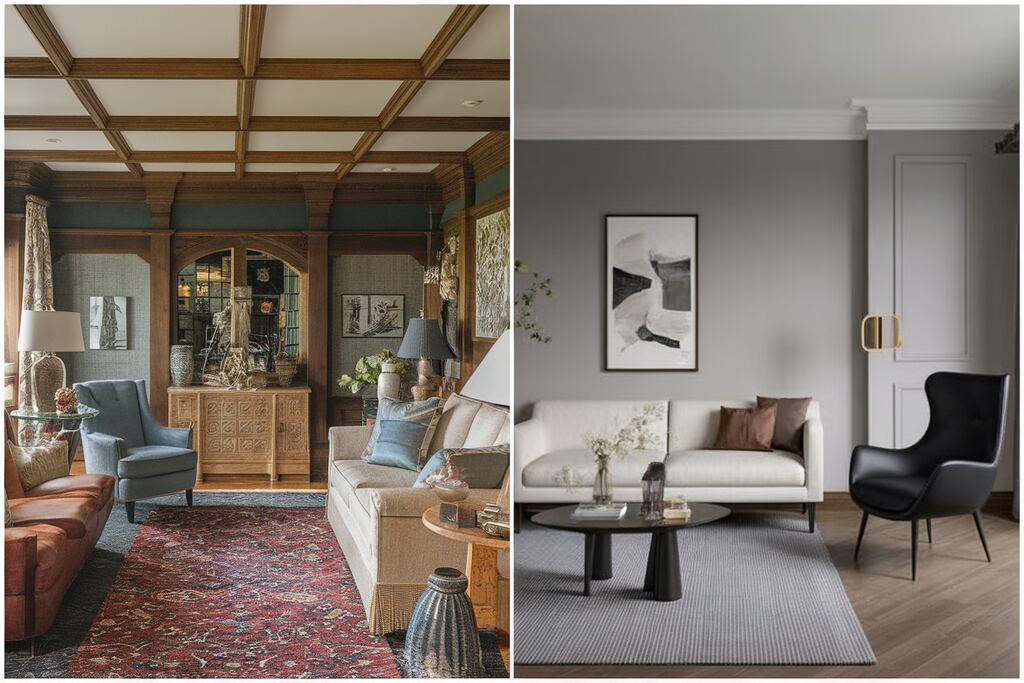
Traditional interiors embrace warm, rich colors. Deep reds, greens, and browns dominate, creating a cozy and inviting feel. Walls, furniture, and textiles all reflect this warmth.
Materials are natural and high-quality. Mahogany wood, silk fabrics, and brass accents bring depth and character to the space. Everything feels crafted with care, making the room feel timeless.
Modern interiors favor neutral tones. White, gray, and black are common, creating a clean and understated look. Occasional pops of color appear through artwork, rugs, or accent furniture.
Materials are industrial and functional. Polished concrete, stainless steel, and engineered wood replace traditional elements. The focus is on simplicity and durability rather than excessive detail.
Flooring & Lighting
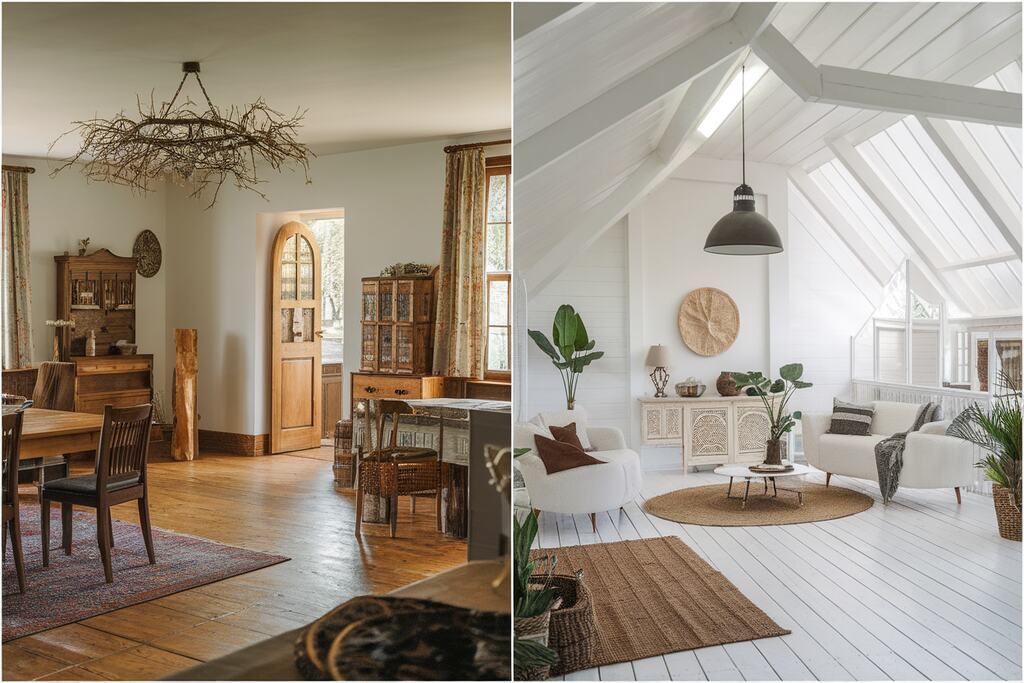
Traditional flooring is dark and rich. Hardwood floors in deep brown tones set the foundation. Ornate rugs with floral or Persian patterns add warmth and texture.
Lighting is layered and decorative. Chandeliers, table lamps, and wall sconces create a soft, ambient glow. Every light source adds to the room’s elegance and coziness.
Modern flooring is light and practical. Pale wood, ceramic tiles, or polished concrete are popular choices. The goal is to keep the space bright and open.
Lighting is minimal and functional. Recessed lighting, pendant fixtures, and large windows maximize natural light. The result is a space that feels fresh, open, and uncluttered.
Blending Both Styles
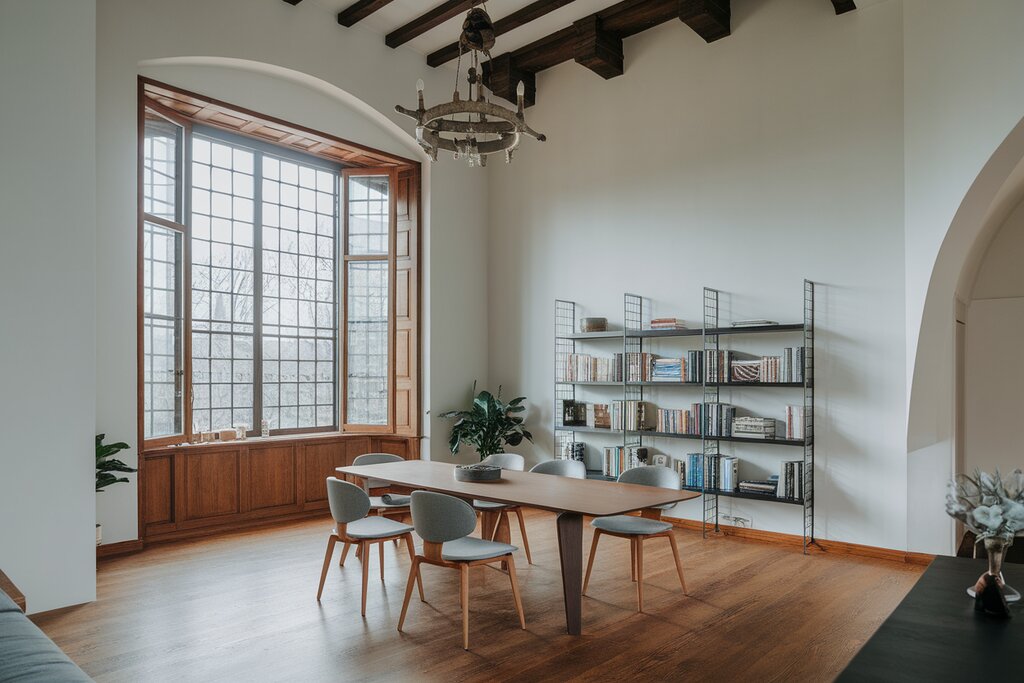
You can start with modern furniture as your foundation. Choose sleek sofas, simple tables, and neutral color palettes. Then, add traditional touches like decorative moldings, carved wood accents, or vintage-inspired lighting. This mix keeps the space elegant but not overwhelming.
Textures play a key role. Use soft fabrics like velvet, linen, or wool to bring warmth. Add depth with rich wood finishes or intricate patterns in rugs and pillows. These details soften modern spaces while keeping them functional.
The color is subtle yet inviting. Stick to neutral tones like beige, gray, or off-white for walls and furniture. Then, introduce deep hues in decor, such as a navy armchair, a gold-framed mirror, or a dark wood coffee table.
Transitional interiors feel inviting, uncluttered, and timeless. They work well in any space, whether large or small. If you want the best of both worlds, this style is a perfect choice.
Choosing the Right Style for Your Home
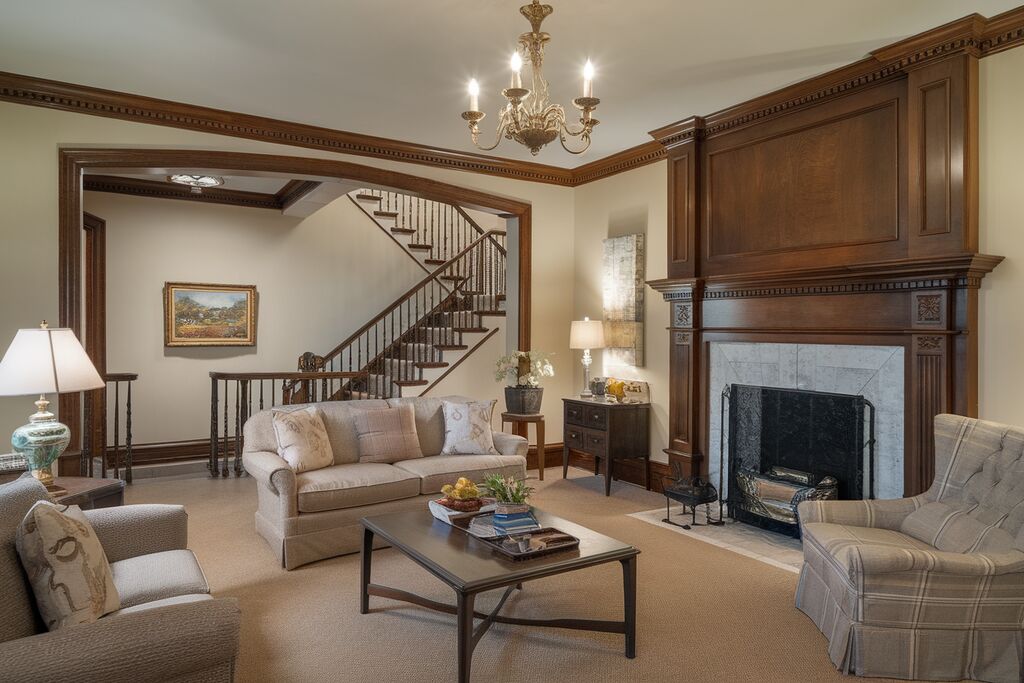
Your home should reflect your lifestyle and personality. Before choosing a style, think about how you live and what makes you feel comfortable. Do you prefer cozy and detailed spaces or open and minimal ones?
Traditional design is perfect if you love history and classic details. It works well in larger spaces where rich textures, elegant furniture, and warm colors can shine. If you enjoy antique decor, ornate chandeliers, and formal rooms, this style might be for you.
Modern design is best for those who prefer simplicity. It focuses on clean lines, neutral colors, and functional furniture. If you like open layouts, uncluttered spaces, and a fresh, airy feel, modern interiors are a great choice.
Not sure which to choose? Blending both styles can create a perfect balance. You can use modern furniture with traditional accents like wood moldings, textured fabrics, or vintage decor. This mix keeps your home stylish and comfortable.
Whatever you decide, make sure your space feels right for you. The best design is one that fits your daily life and personal taste.
Conclusion
Traditional interiors bring warmth and character. They feature rich textures, intricate details, and classic furniture that create a timeless, inviting space. If you love elegance and history, this style is a great choice.
Modern interiors focus on simplicity and functionality. With clean lines, open layouts, and neutral colors, they make a home feel fresh and organized. This style is perfect for those who prefer a sleek, uncluttered look.
A mix of both styles offers the best of both worlds. Whether you choose traditional, modern, or a blend, the goal is to create a home that reflects your personality and meets your needs.
FAQs
What is the main difference between traditional and modern interior design?
Traditional design is ornate, warm, and symmetrical, featuring rich textures and classic furniture. Modern design is minimalist, sleek, and functional, with clean lines and open spaces.
Can I mix traditional and modern interior design?
Yes! Transitional design blends both styles by combining modern furniture with classic architectural details, neutral colors, and layered textures.
Which interior design style is better for small spaces?
Modern design works best for small spaces due to its open layouts, neutral colors, and clutter-free approach, making rooms feel larger and airier.
What materials define traditional vs. modern interiors?
Traditional design uses mahogany, silk, and brass, while modern interiors incorporate glass, steel, and polished concrete for a sleek, contemporary look.
Which interior style is more budget-friendly?
Modern design is generally more affordable since it emphasizes simplicity and functional furniture, whereas traditional design often involves handcrafted, ornate pieces that can be costly.

